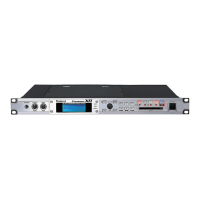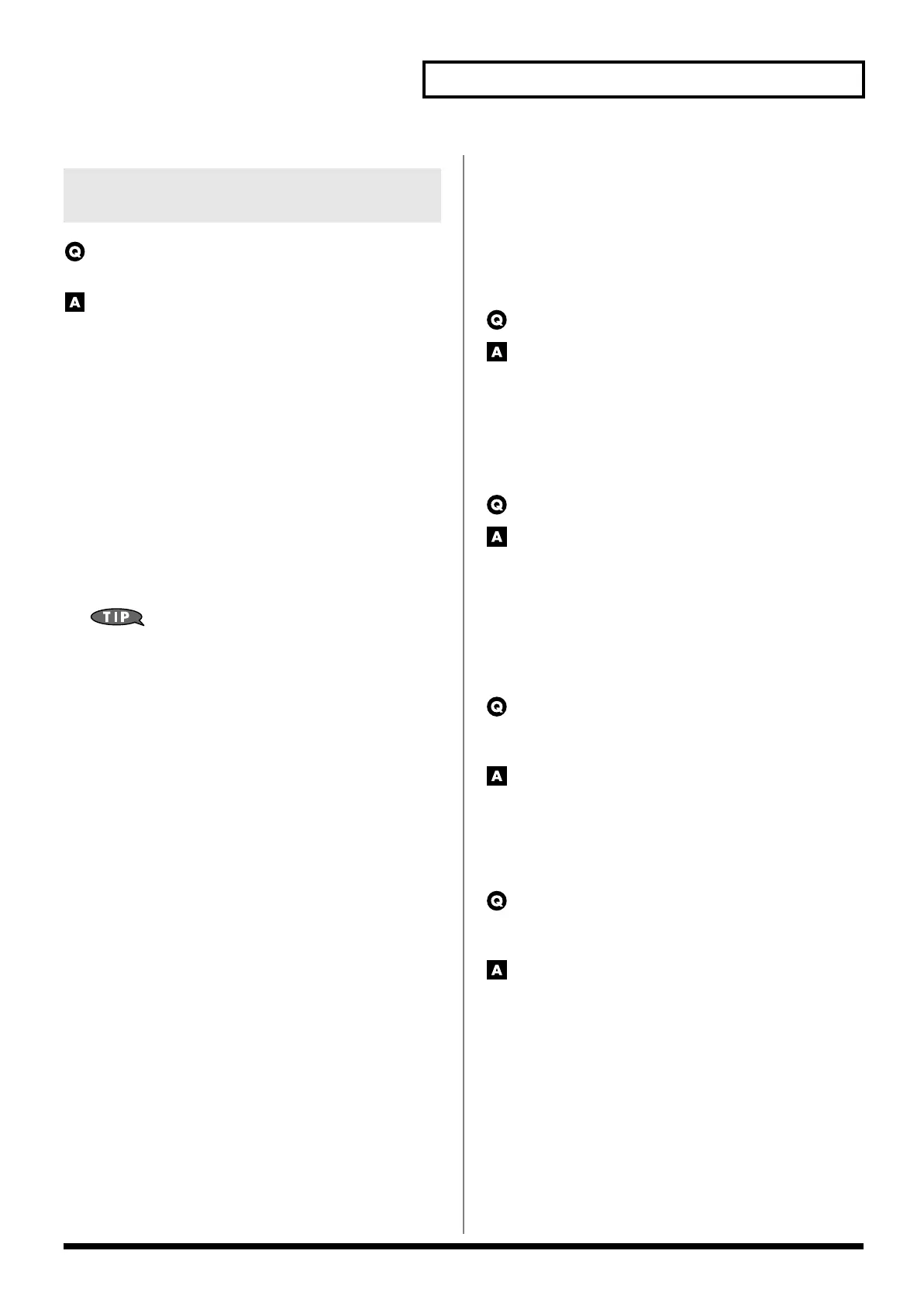179
Troubleshooting
Performances of the external sequencer are sluggish, or have
interruptions.
Problems of sluggish and interrupted performances can crop up
very easily when the sequencer or sound generator used for the
performance has to handle heavy data loads.
Main causes and possible corrective measures are considered
below.
• Are more than 128 voices playing simultaneously?
Reduce the number of voices. The composition of Fantom-XR
Patches is such that up to eight Waves may be used for one
Patch. When using such Patches, even though only one sound
may be heard, it is actually eight sounds that are being played
simultaneously. In addition, with certain sounds like
continuous sounds with long releases, even though the actual
sound may not be audible to you, processing for playing the
sound is still underway, so in these cases as well, the
performance data can differ from the actual number of voices
being played.
In the Part Information window you can check the number of
notes for which sound is actually being processed (p. 87).
• Are you using a Patch that uses a lot of LFO?
Try changing to a different Patch. LFO processing invariably
places a big load on the machine, so heavy use of the LFO slows
down processing for the Fantom-XR overall, which can end up
having affecting the expression of sounds themselves.
• Is the data concentrated at the beginning of the beats in the
sequence data?
Avoid overlapping data with the same timing by setting an
offset of 1–2 clocks instead. Data may easily become
concentrated at the beginning of the beats in the song data
when, for example, the song data is input using Step Recording,
or if the data is quantized after being input with a keyboard in
real time. Because of this, large amounts of data are sent to the
Fantom-XR, and the processing for expressing sounds becomes
bogged down.
• Is there a Program Change at the point where the song
performance is sluggish?
Change the position of the Program Change. When Program
Changes are inserted in songs, processing time for switching
patches increases, which may then cause the performance to
become sluggish.
• Is there a System Exclusive message at the point where the song
performance is sluggish?
Move the location of the data. System Exclusive messages
contain large amounts of data, thus placing a heavy burden on
sequencers and sound modules. Try repositioning data and
changing System Exclusive messages to Control Changes for
any data for which Control Changes can be substituted.
• Is there an Aftertouch or other such large Control Change at the
point where the song performance is sluggish?
Move the location of the data. If the data is no longer needed,
delete the data. In some cases, when using a keyboard that
features aftertouch to input data, you may end up inputting
huge amounts of data before realizing this is happening. Such
large amounts of data can place an excessive load on your
sequencer and sound module.
Can’t receive MIDI messages correctly
Check the following points.
Is the Fantom-XR set to receive MIDI messages?
•
In Patch Mode
Patch Mode Rx Channel parameter (p. 156)
•
In Performance Mode
Performance Part Receive Channel parameter (p. 91)
Performance Part Receive Switch parameter (p. 92)
Exclusive messages are not received.
Check the following points.
• Is the instrument set to receive Exclusive messages?
Set the Rx Exclusive parameter to “ON” (p. 157).
• Does the Device ID number of the transmitting device match
the Device ID number of the Fantom-XR?
Check the Device ID parameter (p. 156).
• Are you attempting to write to the User area? Data can be
written to the User area only in Librarian mode.
I connected an external sequencer or MIDI keyboard to the
MIDI IN connector, and attempted to play a Fantom-XR rhythm
set, but there was no sound. Why?
Check to make sure that the MIDI Transmit channel of the
external MIDI device and the Fantom-XR’s MIDI Receive
channel are matched. The MIDI Receive channel used by the
Fantom-XR in Patch mode is set with the Patch Mode Rx
Channel parameter (p. 156). Rhythm Set performance data is
generally received on MIDI Channel 10.
When the Bend Range for a Patch is increased (48), the pitch
does not rise sufficiently, even when a MIDI Pitch Bend
message is received.
While Patch Bend Ranges can be set anywhere between 0 and
48, when certain Waves in which the pitch is raised (in the +
direction) are used, the pitch may stop rising at a fixed point,
rather than continuing to go up. Although a value of 12 is
ensured for the upper limit of raised pitches, use caution when
setting the Bend Range above this figure.
Issues Related to MIDI and
External Devices
Fantom-XR_r_e.book 179 ページ 2006年4月4日 火曜日 午前10時14分

